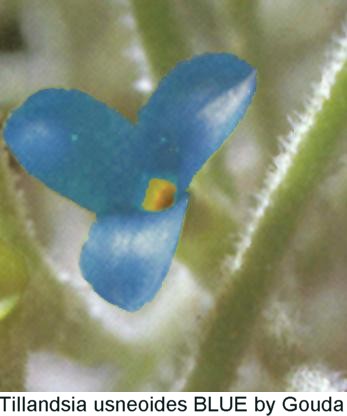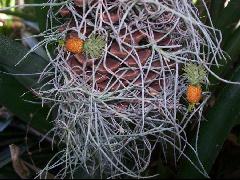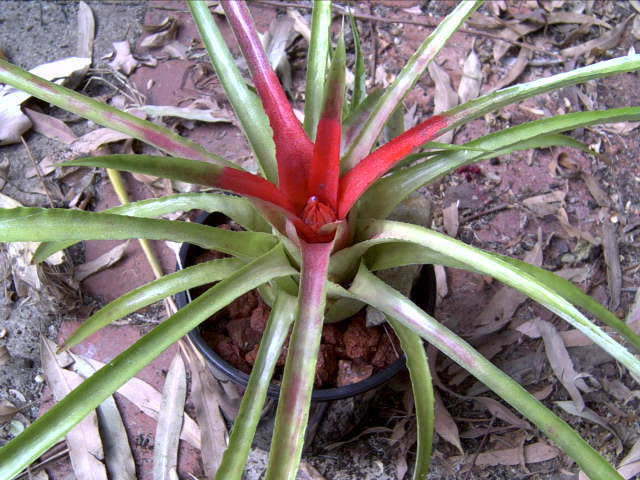
Click for larger image in new screen.
Coming Events.
Jan 14th Vrieseas with hieroglyphic markings on leaves.
Feb 11th Plants in clumps & AGM
November 11th Sales day
Despite the doom and gloom of water restrictions our sales equated with that of last year. Perhaps the public heeded our suggestion that Bromeliads are water-wise plants. If they have lots of trichomes they absorb whatever is thrown at them and if funnel shaped they catch whatever water falls down.
It is lucky we can get access to the hall on the Friday afternoon because we were able to set up in a leisurely fashion. Because it was publicised as a sales day we had few plants on display which meant we could experiment with the sales area. This we did by going lengthwise in the hall. This gave more space to the buying public but has not solved our problem when there are many customers where price tags from expensive plants had been swapped with cheaper ones. Not a wholesale problem but an irritating one. We do not have electronic checking devices that the larger stores have had to introduce to curb this practice. You could price both the plant label AND the price label but then both would change pots because such people are not interested in names! You could do what Chris Larson does in having a tear-off price part. Here again the whole label can be swapped! There is even the possibility of having a central paying area and exit point but each suggestion has its down points regarding practicability. This does not mean we should stop thinking laterally because there may be a solution not yet thought of!!
Talking of Chris Larson, he was the only Vic member who made it across this time. He stayed at our place and behaved himself. He also acted as courier for some tillandsias I had bought from Lotte Hromradnik and now have most of the plants mentioned in her book. If I looked more starry eyed than usual on the door you can put it down to thoughts of mountings! He was able to bring over something different which we must keep in mind when we are selling to the same people who attend our shows. I know that new plants means new hybrids to many people but this is not necessarily the case. I know that our Constitution does not mention plant conservation but that of the Bromeliad Society International does and yet there is no real incentive to put this into action with most World Conferences revolving around new hybrids.
Finally, I would like to thank the newer members who helped behind the trading table even though they were not actual sellers. All proudly wore their new name badges.
November 12th meeting from the Secretary’s desk
I was surprised at the number of apologies, for what to me is my favorite meeting, possibly because I don’t have to prepare a talk! Even so we did have a few strangers call in and quickly leave when they realised they had not read the letter we sent about Saturday being the only day we had our Sales!
When doing correspondence I did mention my shock horror how articles get reprinted from other Newsletters assuming that they are correct. The Illawarra and the Fraser Coast groups had accepted that what appears in the NZ Journal must be correct. If you are going to quote definitions you can’t make up your own rules you must return to basics. The following is an article I wrote but yet to be published, to try to straighten out the problem.
TERMINOLOGY by Bromeliad Cultivar Registrar
Some growers do get concerned with understanding various terms used in cultivating plants and sometimes general writers wax lyrical on the subject without basing their comments on facts.
Plants found in the wild are covered by rules called the International Code of Botanical Nomenclature and Taxonomists as the name implies, deal with a taxon (plural taxa) which is defined as “the international abbreviation for the “taxonomic group” or “taxonomic unit”
Plants arising in cultivation are covered by rules called the International Code of Nomenclature for Cultivated Plants and Cultonomists act with a culton in the same way.
Let us look at some of the more common definitions used in the International Code of Nomenclature for Cultivated Plants – Seventh edition 2004 because we should always refer to the official source.
Clone - two or more individuals, originally derived from one plant by asexual propagation, which remain genetically identical.
Cultivar – an assemblage of plants that has been selected for a particular attribute or combination of attributes and that is clearly distinct, uniform, and stable in these characteristics and that when propagated by appropriate means retains those characteristics. ( Comment -This can be either by hybrid or from the wild and not covered by the ICBN rules)
Group – a formal category denoting an assemblage of cultivars, individual plants, or assemblages of plants on the basis of defined similarity (see Grex)
Grex – a type of Group used in orchid nomenclature applied to the progeny of an artificial cross from specified parents (Comment - Note that this no longer applies to Bromeliads)
Because so many Bromeliad growers also grow Orchids there is always confusion and yet there need not be. Let me explain as best I can. A grex (or plural greges) means a flock and in the plant world means seedlings from the one mating especially if the parents are different species. This grex is known by the hybridist by a formula A x B which is only a formula not a name. In Orchids this is given a name for the number of plants related in this way and any other mating A x B gets the same named grex. It would appear with orchids there is never any mistake on the identity of species AND that there is never a chance of foreign pollen causing problems. I know from experience with Bromeliads that misidentity is a problem as too is the promiscuity of Bromeliads in general. So grex names do not apply to Bromeliad growers where EACH hybrid should get its own name as do humans! Each is unique in its genetic makeup! The only exception is if the plants of a grex that LOOK similar they can share the same cultivar name. If you cross a true species with another true species this is called F1 or first generation. The progeny are very similar but you get hybrid vigour. If you get seed from F1 generation plants at F2 level you get the highest rate of differences in the progeny. To expand on this you can check up on the Mendellian theory on genetics. It is this F2 and higher that is the reason why we play down the use of the word grex because it only misleads.
Hybrid – the result of a cross between differing plants or taxonomic units
Mutant – an individual produced as a result of mutation
Mutation – a spontaneous or engineered change in the genotype (genetic make-up of an individual), which may alter the phenotype (the sum total of all the characteristics of an individual plant) (Comment - in other words what the genotype actually looks like)
Sport – an apparent mutation which has occurred on part of a plant (Comment - eg offset)
If you, as a writer wants to explain these definitions further please do so but remember to always refer back to these definitions to make sure you are in fact explaining such definition and not your own conception of what you think it should be.
If you want further definitions and do not have access to the proper document please let me know and I will tell you what is in the GOOD book.
There were a few plants on display to give big Len a chance to get us involved. First up was a Neoregelia pineliana which does not look like a typical Neoregelia with its narrow leaves and somewhat raised inflorescence but it did have a raised centre. There are so many around also called Neoregelia pineliana but this was one that had Harry Luther’s approval. Not an easy plant to grow.


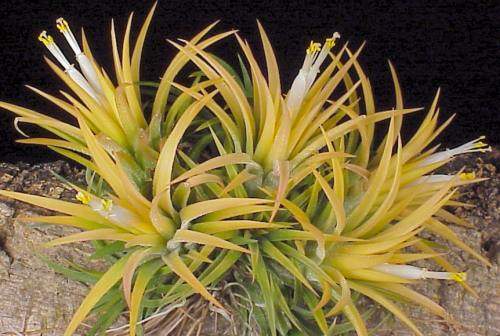
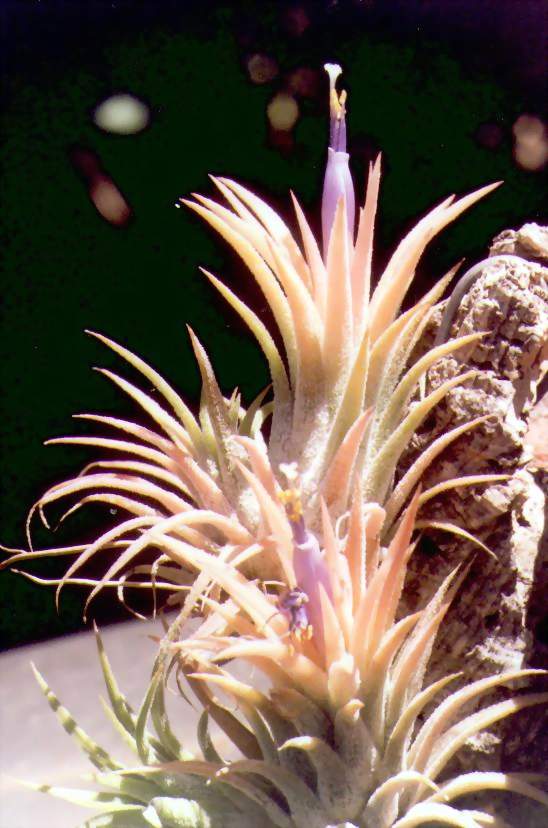
The bloke from the bush down Victor way, apparently got fed up with the bush and has returned to the big smoke. I refer to Peter Huddy – of course! It was good to see him back so we had an able replacement for Colin Waterman as auctioneer who had been called away on urgent family business in WA. This non attendance was a great disappointment for me because he had been asking about Billbergia ‘Euphemie Waterman’ ad nauseum. We had specially got this plant to see how much he would bid in honour of the Waterman name!

For those who want to prepare themselves for the meeting when we talk about Latin names the following poem will be of interest! Apparently budding taxonomists in Edwardian days chanted the following:
Taxonomic Mnemonic
Repens and reptans are rooting and creeping,
By runners sarmentosus is rooting and leaping.
Ascendens, adsurgens nearly upwards are shooting,
By stolons stoloniferus is running and rooting,
Descendens grows downwards, decumbens is flopping;
Erectus straight upwards, cernuum is dropping.
Procumbens, humifusus, and patens are spreading,
Diffusus in every direction is heading.
Deflexus bent downwards, reflexus bent backwards;
Inflexus bent inwards, convolutus rolled up.
Revolutus rolled backwards, involutus rolled inwards
Secundus one-sided, calathinus with cup.
Villosus’ long soft hair is growing old;
Hirsutus' unshaved beard is coarse and bold.
Hispidus bristly with a two-day growth;
Strigosus, hirtus, sharp and rigid both.
Silky sericeus flaunts its fine smooth hair;
Arachnoidea cobwebbed like a spider's lair.
Ciliatus' leaves like lids of eyes have lashes,
Fimbriatus fringy like Edwardian sashes.
Tomentosus' thick short hair you stroke;
Velutina's velvet on Queen Mary's toque.
Incanus hoary white, a plant for shows;
Thick wool on lanatus longer grows.
Like baby hair pilosus short and sleek;
And here's pubescens, downy, dense and weak,
Crinitus' long soft hair's in little puffs;
Barbatus is mustachioed in tufts.
Encholirium ‘Whoops’ by Derek Butcher and Len Colgan.
Thanks to the article in Bromeletter 44(6): 6. 2006 we are now aware that there are more bromeliad people growing this prickly genus than first thought. They should be made aware that we made a slight misnaming with the assumption we had a large growing form of E. magalhaesii in Australia alias #6. Pot culture should have told us that the plant would be growing smaller than would be expected in the ground.
The second plant – this time from Guenda, Minas Gerais – has flowered causing us concern because it had an inflorescence similar ( but not quite) to #6. Surely this was not another but smaller E. magalhaesii ! Not only was the plant much smaller but the leaves were almost spineless. When you get into this situation you refer to the experts. So, photos were sent to Rafaela Forrza in Brazil who got her doctorate studying this genus! Such are the wonders of modern communication we now know we have an E. magalhaesii from Guenda and our #6 is really E. subsecundum. Apparently both species can be found near Guenda. We now include a photo of the true E. magalhaesii which was taken at an angle to suggest the plant is huge whereas the inflorescence is under 20cm tall.
Corrections to names will be made in the BSA Website so do not despair.
As a parting comment, Webmaster, Ian Hook, did suggest that if we wanted a name for our plant from Guenda it could be called E. coli because of the affect it had on him. Presumably he prefers his plants mounted!

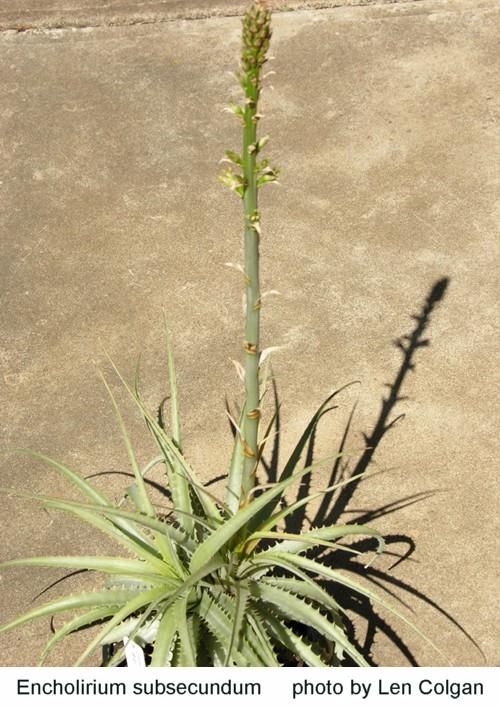
Tillandsia usneoides - Hoaxes and non-hoaxes.
In 1998 I was given a test by Tom Lineham (past Editor of the BSI Journal) who sent me a photograph entitled Tillandsia usneoides but the photo had been taken somewhere in Alaska. If you did not know the locality you would assume it was correct like I nearly did. It is in fact a Usnea.
In 2002 I was sent a photo of Racinaea insularis by Sandra Pozo on the Galapagos Islands. But what were the hanging festoons in the photo? Was this a first sighting of T. usneoides on these islands. False alarm because they were lichen of some sort!
In 2006 on my asking on the internet on Brom-L about a blue flowered T. usneoides as mentioned in Smith & Downs, Eric Gouda of the Utrecht University, Belgium obliged by doctoring a photo so we had a blue petalled flower. He even sent a red flowered one for good measure. By this time even the most naïve were having doubts of these claims!
We must remember that the petals of this Tillandsia are not always green. In 2000 when Wolfgang Tittelbach – Editor of Die Bromelie – said there was a yellow flowering form, I took it with a pinch of salt! Anyway, I acquired a small piece and a couple of years later it flowered yellow which had me in raptures and bragging to Walter Till. Walter deflated me somewhat, by saying it was found somewhere in N Peru and was not that rare. I decided it should be recorded somewhere and this is how the cultivar name ‘Spanish Gold’ came into existence. The interesting thing is that it sets seed readily but the seed is not viable. Perhaps it needs another clone.
This seed setting had me wondering because although I was always seeing green flowers on my various bunches of T. usneoides hanging around the garden I had never seen any seed. This puzzled me because of my experience with the sub-genus Diaphoranthema of which T. usneoides is a member. I have rather an extensive collection of this group and find that if a plant looks like it is going to flower you always seem to find a seed pod later on. On some occasions the flower does not even need to open! Why is it so?
In 2006 Greg Dauss of California sent me a photo of roots on a T. usneoides seedling. I knew this was not a hoax because I knew that you could not get roots on a ‘cutting’, seedlings were still ‘smart’ enough to anchor themselves wherever they germinated by the use of roots. I just had to ask Greg how many times was he getting seed to set on his T. usneoides. In his experience he had only seen the thick leaved form perform.
Perhaps others may like to comment on their experience.
Any more hoaxes or non-hoaxes ?
